
How to Use 9V battery: Examples, Pinouts, and Specs
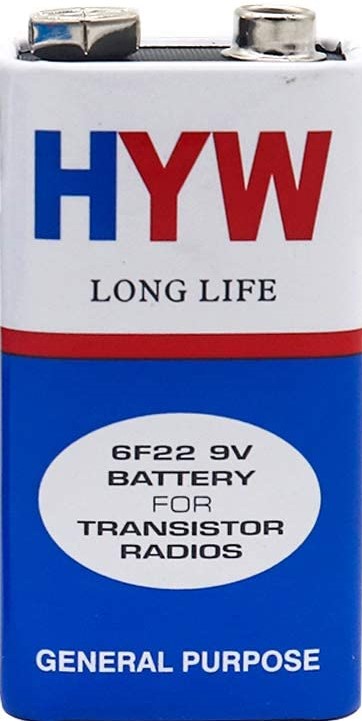
 Design with 9V battery in Cirkit Designer
Design with 9V battery in Cirkit DesignerIntroduction
A 9V battery is a compact, rectangular power source commonly used in a variety of electronic devices. Known for its distinctive shape and snap connectors, it provides a nominal voltage of 9 volts, which is suitable for applications requiring low current draw over a relatively long period. Common applications include smoke detectors, multimeters, portable radios, and as a backup power source for digital clocks.
Explore Projects Built with 9V battery
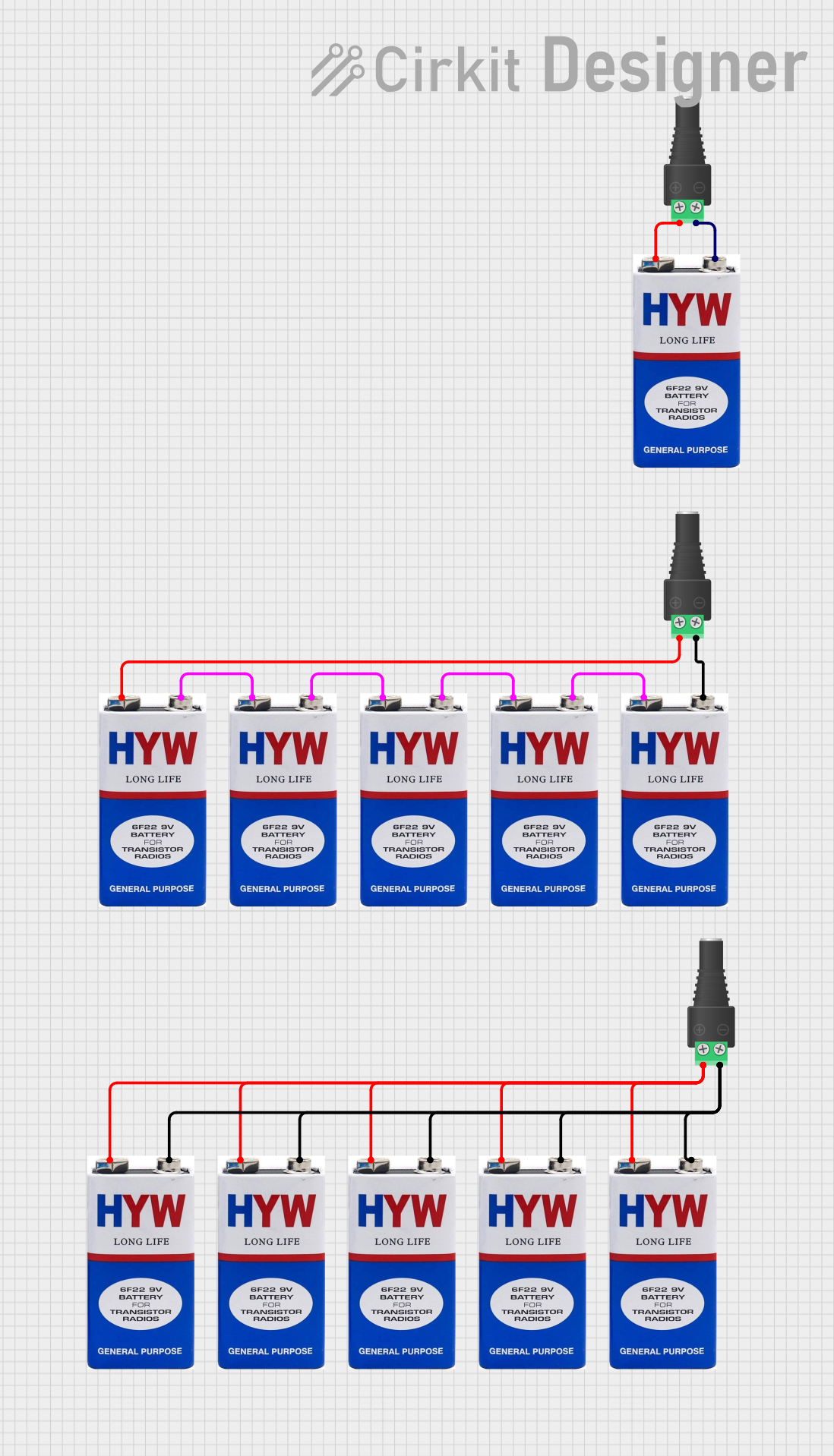
 Open Project in Cirkit Designer
Open Project in Cirkit Designer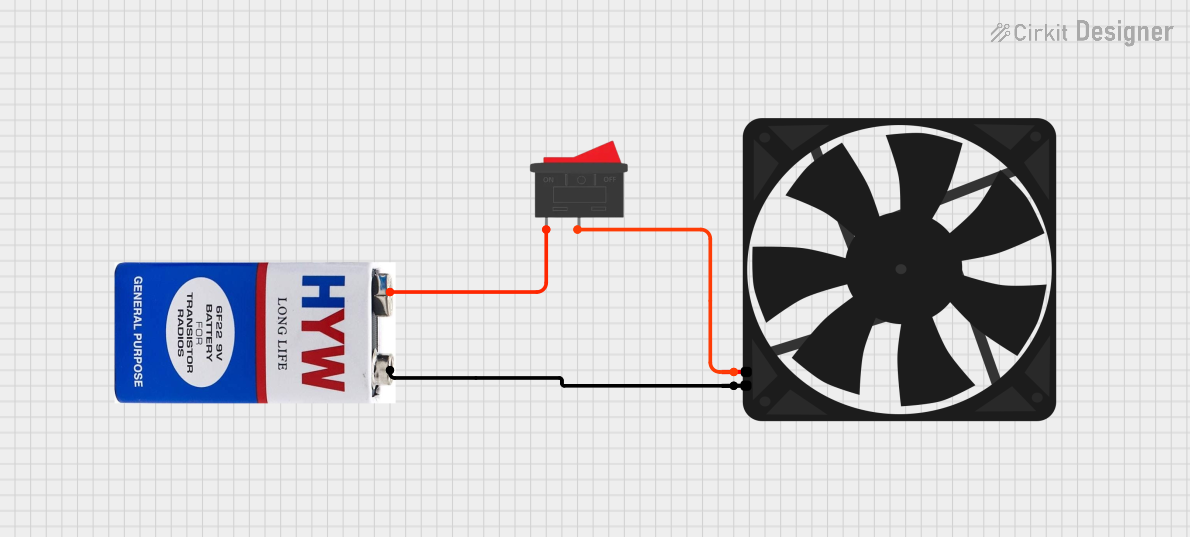
 Open Project in Cirkit Designer
Open Project in Cirkit Designer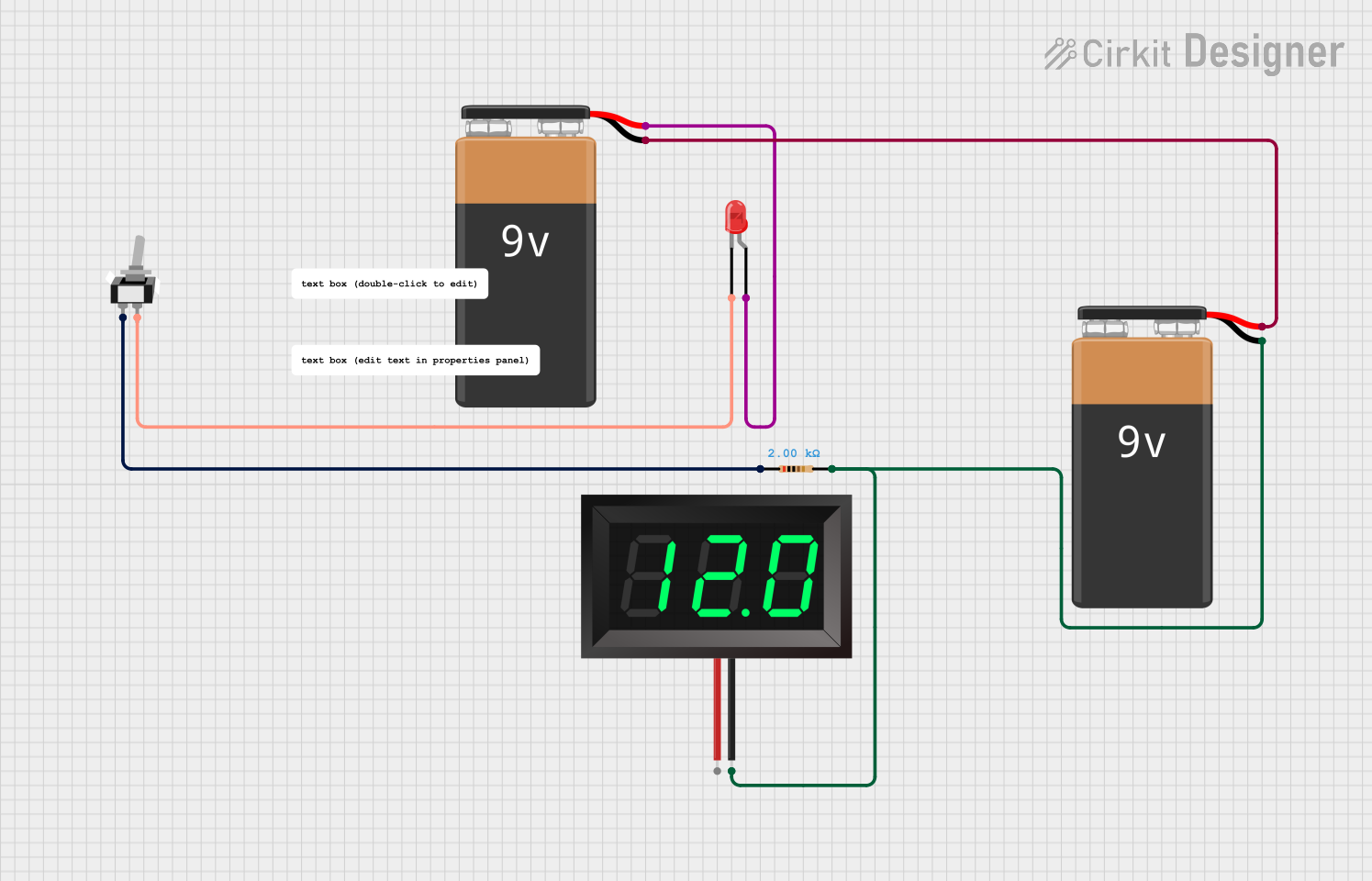
 Open Project in Cirkit Designer
Open Project in Cirkit Designer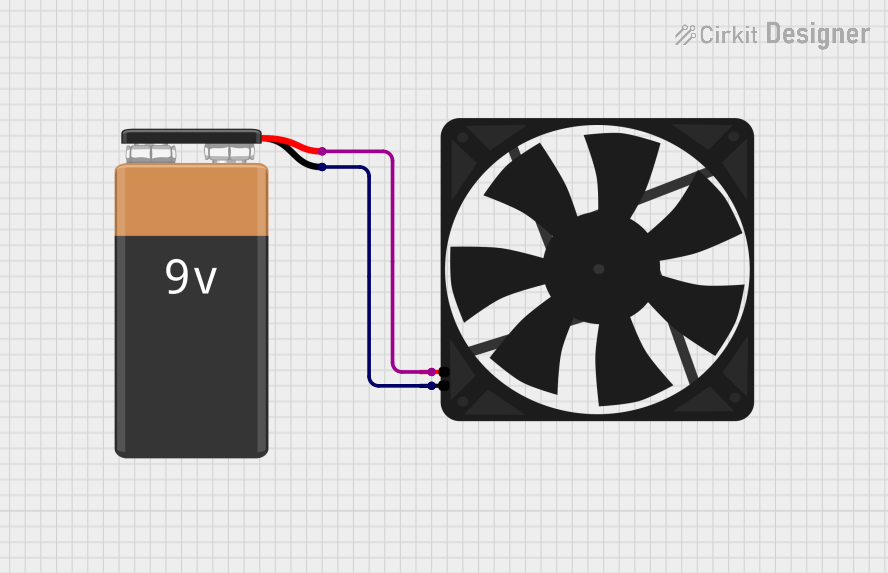
 Open Project in Cirkit Designer
Open Project in Cirkit DesignerExplore Projects Built with 9V battery

 Open Project in Cirkit Designer
Open Project in Cirkit Designer
 Open Project in Cirkit Designer
Open Project in Cirkit Designer
 Open Project in Cirkit Designer
Open Project in Cirkit Designer
 Open Project in Cirkit Designer
Open Project in Cirkit DesignerTechnical Specifications
Key Technical Details
- Nominal Voltage: 9V
- Chemistry Variants: Alkaline, Lithium, NiMH (rechargeable), NiCd (rechargeable)
- Typical Capacity: 400mAh to 1200mAh (varies by chemistry and manufacturer)
- Shelf Life: 2 to 5 years (varies by chemistry and storage conditions)
- Operating Temperature Range: -20°C to 60°C (varies by chemistry)
Pin Configuration and Descriptions
| Pin Name | Description |
|---|---|
| Positive | The smaller, typically male snap connector, marked with a "+" sign. |
| Negative | The larger, typically female snap connector, marked with a "-" sign. |
Usage Instructions
How to Use the Component in a Circuit
- Identify the Polarity: Locate the positive and negative terminals of the 9V battery, marked with "+" and "-" respectively.
- Connect to Circuit: Use a battery snap connector to attach the 9V battery to your circuit, ensuring correct polarity.
- Power On: Once connected, the battery will begin to supply power to the circuit. Ensure that the circuit's power requirements do not exceed the battery's capacity.
Important Considerations and Best Practices
- Voltage Regulation: If your circuit requires a regulated voltage, consider using a voltage regulator to maintain a consistent output, as the battery's voltage can decrease over time.
- Battery Life: To maximize battery life, disconnect the battery when not in use, as some circuits can draw small amounts of power even when switched off.
- Rechargeable Options: If frequent battery replacement is a concern, consider using rechargeable NiMH or NiCd 9V batteries.
- Disposal: Dispose of used 9V batteries properly according to local regulations, as they contain materials that can be harmful to the environment.
Troubleshooting and FAQs
Common Issues
- Device Not Powering On: Ensure the battery is properly connected with correct polarity and that it has sufficient charge.
- Short Battery Life: Check if the device's power consumption is higher than the battery's capacity or if there are any short circuits draining the battery quickly.
Solutions and Tips for Troubleshooting
- Testing Battery Charge: Use a multimeter to check the voltage across the battery terminals. A reading significantly lower than 9V indicates a depleted battery.
- Battery Leakage: If a battery leaks, remove it immediately and clean the device's contacts. Leakage can cause corrosion and damage to the device.
FAQs
Q: Can I recharge a regular 9V alkaline battery? A: No, standard alkaline batteries are not designed to be recharged and attempting to do so can be dangerous.
Q: How do I know when to replace my 9V battery? A: Replace the battery when the device powered by the battery starts to show signs of low power, or when a multimeter reading shows a voltage drop below the device's required voltage.
Q: Is it safe to store 9V batteries together? A: Store 9V batteries with their terminals covered to prevent short circuits, especially if they are kept in a container with other metal objects.
Example Code for Arduino UNO
// Example code to check a 9V battery voltage using Arduino UNO
int analogPin = A0; // Connect the positive terminal of the 9V battery to A0
int raw = 0; // Variable to store the raw input value
float voltage = 0; // Variable to store the voltage
void setup() {
Serial.begin(9600); // Start serial communication at 9600 baud
}
void loop() {
raw = analogRead(analogPin); // Read the input value
voltage = raw * (9.0 / 1023.0); // Convert the value to voltage
Serial.print("Battery Voltage: ");
Serial.println(voltage); // Print the voltage to the Serial Monitor
delay(1000); // Wait for a second
}
Note: The above code assumes the use of a voltage divider to step down the 9V to a safe level that can be read by the Arduino's analog input (which has a maximum of 5V). Always ensure that the input voltage does not exceed the maximum voltage rating of the microcontroller's analog input pins.